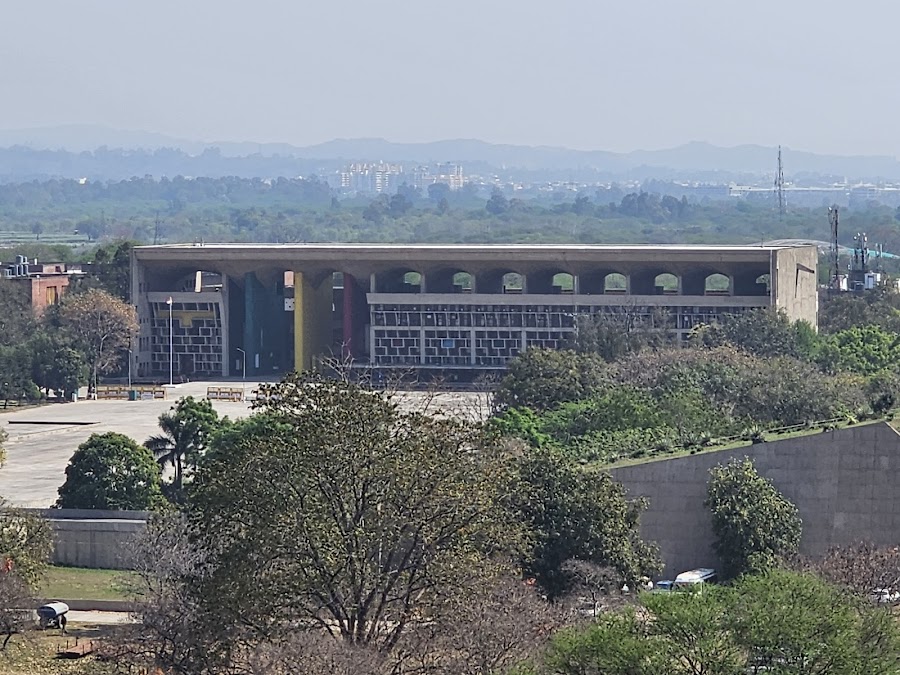
High Court of Punjab and Haryana
Chandigarh, India
- Admire the modernist architecture.
- Explore the surrounding plaza.
- Learn about Le Corbusier's design principles.
- Photograph the building's unique facade.
Known for:
Description:
The High Court of Punjab and Haryana in Chandigarh is an architectural marvel and a significant landmark. Designed by the renowned architect Le Corbusier, it exemplifies modernist architecture with its imposing concrete structure and geometric forms. The building's facade is characterized by exposed concrete, brise-soleils (sun breakers), and a grand entrance. Visitors can admire the building's unique design and appreciate its contribution to Chandigarh's urban landscape. While public access to the courtrooms might be restricted, the exterior and surrounding plaza offer ample opportunity for photography and architectural appreciation. The High Court stands as a testament to Corbusier's vision of a modern, functional, and aesthetically pleasing civic building. It's a must-see for architecture enthusiasts and those interested in the city's planned design.
History:
The High Court of Punjab and Haryana was established in 1966 after the reorganization of the state of Punjab. However, the current building in Chandigarh, designed by Le Corbusier, was completed earlier in the 1950s as part of the larger Chandigarh Capital Complex project. This complex was envisioned as a symbol of independent India's progress and modernity. The High Court building replaced the previous court located in Lahore (now in Pakistan). Its design reflects Corbusier's principles of functionalism and brutalism, emphasizing the use of raw concrete and geometric shapes. The building has served as a vital institution for the administration of justice in the region for decades. Its architectural significance has also made it a subject of study and admiration for architects and urban planners worldwide.